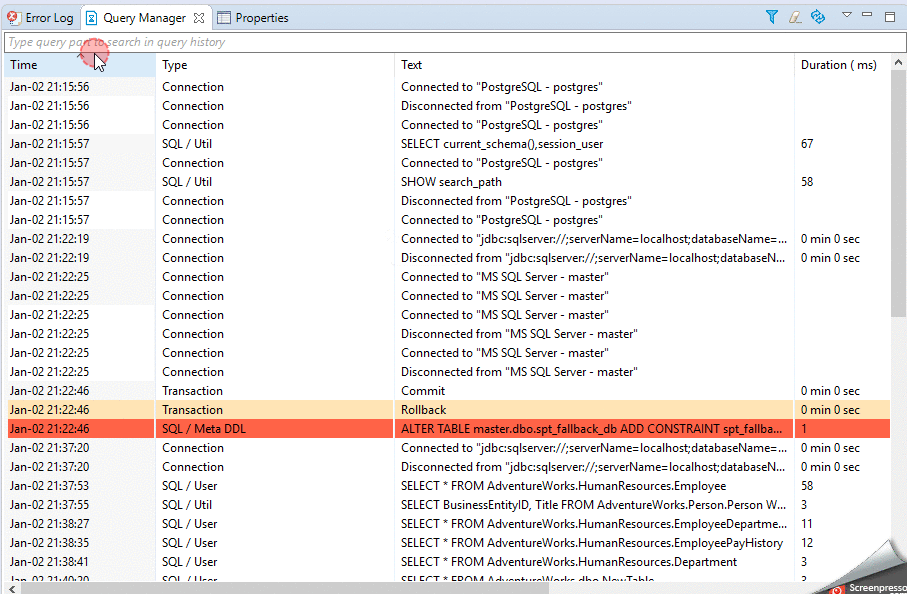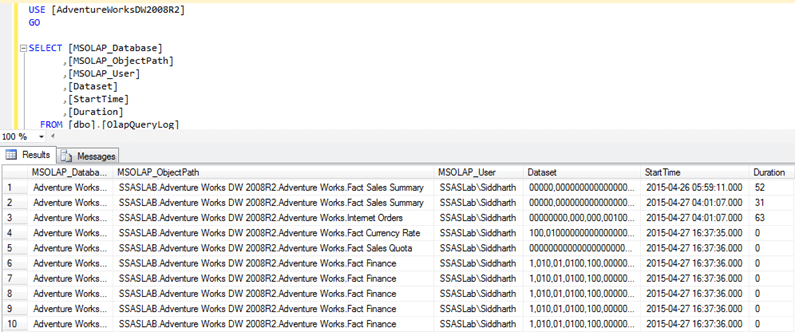You are looking for information on the topic “sql server log all queries”. dongtienvietnam.com will gather information to answer your questions in this article. Please read this article to the end to find the information you want to see. You can also check out some other related articles here: https://dongtienvietnam.com/category/wiki/ how to enable logging in sql server, how to check sql server logs in event viewer, sql server trace queries, sql server log files, mysql log all queries, how to see recent queries in sql server, sql server queries run by user, how many log files in sql server.
View information about the sql server log all queries
Information about this question
- Question: sql server log all queries
- Time: Updated 77 minute ago
- Modified: Updated 134 hours ago
- View: 14737
sql server log all queries
To log all queries in SQL Server, you can enable the SQL Server Profiler, which is a tool for monitoring events in SQL Server. Follow these steps:
-
Open SQL Server Management Studio and connect to your SQL Server instance.
-
Click on “Tools” in the menu bar and select “SQL Server Profiler”.
-
In the SQL Server Profiler, click on “File” in the menu bar and select “New Trace”.
-
In the “Trace Properties” window, select the database you want to monitor and click “Run”.
-
In the “Trace Properties” window, click on the “Events Selection” tab.
-
Select the “SQL:BatchCompleted” and “RPC:Completed” events under the “TSQL” category.
-
Click on the “Column Filters” button and select the “TextData” column.
-
In the “Edit Filter” window, enter “%” in the “Like” field to capture all queries.
-
Click “OK” to save the filter and close the window.
-
Click on “Run” to start the trace and begin capturing all queries.
-
Once you have finished monitoring, stop the trace by clicking on the “Stop” button in the SQL Server Profiler.
Note that logging all queries can generate a significant amount of data, so it’s important to manage the size of the log file and regularly clean up old logs to avoid filling up the disk space.
Watch videos related to “sql server log all queries”
MYSQL general query log file
Images related to sql server log all queries
Found 10 sql server log all queries related images.





how to enable logging in sql server
Enabling logging in SQL Server involves several steps, as outlined below:
-
Open SQL Server Management Studio and connect to your SQL Server instance.
-
Expand the “Management” node in Object Explorer and right-click on “SQL Server Logs”, then select “Configure”.
-
In the “Configure SQL Server Error Logs” dialog box, specify the number of error logs you want to keep, and the maximum size for each log file.
-
Under “Log File Viewer”, select “Configure” to configure the location where SQL Server saves log files. You can choose to save log files in the default location, or specify a custom location.
-
Under “Database Mail”, configure your email settings if you want to receive email notifications of log file events.
-
Under “SQL Server Agent”, configure the agent to start automatically if you want to use it to schedule tasks and monitor events.
-
Click “OK” to save your settings and enable logging.
Once logging is enabled, you can view the SQL Server log files to monitor events and troubleshoot issues. You can also configure alerts to notify you of specific events, such as errors or warnings, using SQL Server Agent.
how to check sql server logs in event viewer
To check SQL Server logs in Event Viewer, follow the steps below:
-
Open Event Viewer. You can do this by typing “event viewer” in the Start menu search box and selecting the “Event Viewer” app from the search results.
-
In Event Viewer, select “Windows Logs” from the left-hand pane.
-
Select “Application” from the list of logs that appear under “Windows Logs”.
-
In the right-hand pane, you should see a list of events that have been logged for the Application log.
-
To filter the events to only show SQL Server related events, click on the “Filter Current Log” option on the right-hand pane.
-
In the “Filter Current Log” dialog box, under the “Event sources” dropdown, select “MSSQLSERVER” for the default instance or “MSSQL$<instancename>” for named instances.
-
Click “OK” to apply the filter.
Now, you should only see the SQL Server related events in the Application log. You can click on each event to view more details about it.
You can see some more information related to sql server log all queries here
- How to log ALL queries made by users in SQL Server 2017 …
- How to Check SQL Server Query History – Devart Blog
- Viewing the SQL Server Error Log – Microsoft Learn
- SQL Server SELECT Examples
- Logging ALL Queries on a SQL Server 2008 Express Database?
- Logging all queries executed on MSSQL database
- How to Check SQL Server Query History – Devart Blog
- How to log all SQL query ? – Lightrun
- How to manage SQL Server logs effectively – SQLShack
- How can I log all SQL queries to a file? – Odoo
Comments
There are a total of 611 comments on this question.
- 312 comments are great
- 269 great comments
- 420 normal comments
- 104 bad comments
- 69 very bad comments
So you have finished reading the article on the topic sql server log all queries. If you found this article useful, please share it with others. Thank you very much.
